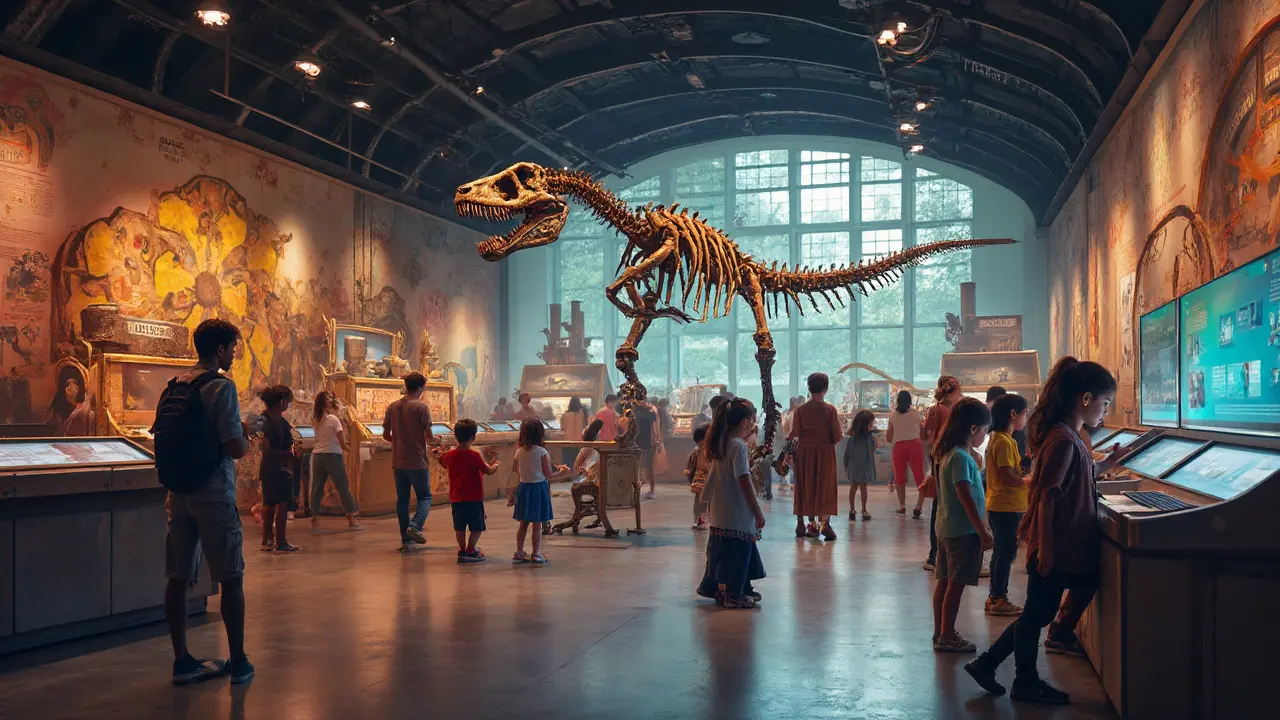London attractions aren’t just about selfies with Big Ben or royal guard parades. If you’ve got a curious mind or just get bored easily, the city’s packed with places where you can play, prod, and properly learn something cool. Ever tried building an earthquake-proof tower or sending a code in Morse at a real museum? Welcome to hands-on London.
Whether you’re a parent dodging the umpteenth request for another soft play session, or just fancy uncovering hidden stories behind the city’s brickwork, London delivers. You don’t have to drive out to the countryside for brainy adventures. From trendy South Kensington to quirky Covent Garden basements, these are spots made for exploring with wide eyes—and usually, a big grin.
- Museums You Can Touch
- Science Spots That Wow
- History Up Close and Personal
- Hidden Learning Gems
- Practical Tips for Curious Explorers
Museums You Can Touch
Some museums in London get that people—especially kids and the young at heart—learn best when they’re elbows-deep in the action. At these places, you won’t find glass cases just begging to be ignored. Instead, you’ll get proper hands-on fun that sticks with you way after you leave.
The Science Museum in South Kensington leads the pack here. Its Wonderlab is part science playground, part WOW-factory. Imagine spinning yourself silly on a friction platform or shooting a massive smoke ring across the floor. Every hour, live science demos will have you on the edge of your seat—think lightning bolts and explosions. The best bit? Everything’s designed so you can try it yourself, not just gawp from afar.
“The Wonderlab experience is all about getting stuck in and exploring science physically, not just learning facts,” says Dr. Anna Starkey, Creative Director at the Science Museum Group.
If you’re dealing with curious littluns, the London attractions scene doesn’t let you down. Just up the road, the Natural History Museum’s Investigate Centre lets kids (and, let’s be honest, adults) touch real fossils, examine bugs under microscopes, and ask experts literally anything about animal skeletons. They even run mini ‘scientist for a day’ activities during school holidays—worth booking ahead, these spots fill up fast.
On the east end, the Museum of London Docklands has its Mudlarks gallery, custom-built for under-eights. Imagine a miniature Thames you can actually splash in, plus crane simulators and dress-up corners. Bonus: loads of interactive activities are free for London families with proof of address.
- Pre-book timed tickets at major museums, especially weekends and half-terms.
- Free lockers at the Science Museum save you dragging lunchboxes around all day.
- Bring a change of clothes for really young museum-goers—they’ll get messy, trust me.
If you like numbers, here’s how many visitors the big hands-on museums see each year:
| Museum | Annual Visitors |
|---|---|
| Science Museum | Over 3 million |
| Natural History Museum | 4.5 million+ |
| Museum of London Docklands | Almost 350,000 |
London’s hands-on museums are made for anyone who likes learning with their sleeves rolled up—and they’re not just for families. Even grown-ups find themselves queuing for the biggest bubble wands or tackling the oldest train simulator in the country. See you at the Wonderlab lightning demo—just remember to cover your ears.
Science Spots That Wow
Forget old-school science fairs. London takes learning to the next level with interactive zones, pop-up experiments, and enough gadgets to make even your most screen-obsessed teen look up. The Science Museum in South Kensington totally owns the scene here. This place is free to get in and you can easily lose four hours messing about in Wonderlab—think lightning bolts, live demos, and a slide that feels faster than the Northern line. Don't miss Launchpad, where you actually get to tinker with magnets and pulleys yourself. If you hear a really loud bang, it’s probably the hydrogen cannon (no joke—earplugs are handy).
Trying to keep up with younger kids? The Pattern Pod is like a science playground for under-8s, all colourful lights and hands-on activities. Meanwhile, if fossils make your heart race, walk next door to the Natural History Museum. Dippy the Diplodocus might’ve left for tours, but Hintze Hall is still home to the massive blue whale skeleton that stops everyone in their tracks. There’s also the new Human Evolution gallery and the Investigate science centre in the basement, perfect for holding an actual chunk of meteorite.
If you want science with a side of skyline, check out the Royal Observatory in Greenwich. Here you can literally stand on the Prime Meridian, meaning half of you is in the eastern hemisphere and half is in the west. Head to the Peter Harrison Planetarium for shows that make you feel like you’re floating through space. Nighttime stargazing sessions book up quickly, so get tickets ahead if you want a slice of clear London sky.
"London's Science Museum is about sparking people's curiosity and inspiring a new generation of inventors and explorers." – The Guardian
If hands-on science is your vibe but you want something different, the Francis Crick Institute sometimes flings open its doors to the public. You’ll find real scientists showing off their latest stem cell discoveries or running family workshops right in the middle of King's Cross.
- Always check ahead for pop-up talks or workshops, as most venues update their schedules weekly.
- Peak times like half-term mean big crowds—go on a weekday just after lunch for the easiest experience.
- Packed lunch in your bag saves money; museum cafes are pricey and queue-heavy.
Science in London never feels samey, so if someone claims they’re "not into museums," dare them to visit just one of these. They’ll probably leave plotting their next trip.

History Up Close and Personal
Forget dusty displays behind glass—London’s got historic spots where you can actually time travel in your trainers. Take the Tower of London for example. Yes, the Crown Jewels are there, but did you know Yeoman Warders (Beefeaters) give tours that seriously pull you into the dark tales of traitors and prisoners? Try asking them about the ghost stories or the ravens; they know the gritty details. Plus, every kid loves seeing armor and swords up close.
Down the Thames, the Imperial War Museum turns history into something you can almost touch. Interactive exhibits let you step inside a World War I trench, experience an air raid shelter from the Blitz, and nose around actual tanks. No silent walking here—kids are encouraged to press buttons and ask awkward questions.
If you want a taste of Victorian London, head over to the Old Operating Theatre Museum. Creep up some narrow stairs in a church attic behind London Bridge and you’ll find yourself in Britain’s oldest surviving operating theatre. The old surgical gear and sawdust on the floor will make you grateful for modern medicine. They run live demonstrations and talks, so check their calendar for the proper gory experience.
For families, the Museum of London Docklands tells the story of how the Thames shaped the capital. Kids love the Mudlarks gallery—an interactive play space where little ones can pretend to captain a ship, shift cargo, and explore the whiffier side of London's port days.
| London Site | Annual Visitors (Past Year) | Top Hands-On Feature |
|---|---|---|
| Tower of London | 2.7 million | Guided tours by Beefeaters |
| Imperial War Museum | 1 million | WWI trench & Blitz shelter |
| Old Operating Theatre Museum | 55,000 | Live surgery talks |
| Museum of London Docklands | 450,000 | Mudlarks kids gallery |
Best tip: For most of these places, booking tickets online saves you both time and money. And if you’re keen on a proper London attraction that mixes history and play, try going midweek or early in the morning—beat the school trips and crowds.
Hidden Learning Gems
Not every spot with a real wow-factor in London attractions is splashed all over Instagram. Some places hide in plain sight and turn out to be pure gold if you’re after a hands-on, brainy day out. These often get missed by the usual tourist crowd but are a hit with locals who like to dig a bit deeper.
Start with the Grant Museum of Zoology tucked away behind University College London. There’s an elephant heart in a jar, a quagga skeleton (it’s like a zebra cousin, now extinct), and tray after tray of real animal specimens. It’s small, never rammed, and perfect if you love both the natural world and the weird.
If you’re into maths, the Science Gallery London just by London Bridge puts on interactive exhibits mixing science, art, and everyday dilemmas—like how tech is changing our brains or where food really comes from. Entry is usually free and you can sometimes join workshops or talks for a proper deep dive.
Now, skip the long lines at Madame Tussauds and instead try the Old Operating Theatre in Southwark. It’s actually Europe’s oldest surviving surgical theatre, hidden in the roof of a church. You’ll hear hardcore stories about surgery before anaesthetics. Sometimes they do live demos with 19th-century tools—no, not on real people! If you love stories that make your skin crawl a bit, this place nails it.
Don’t overlook the Ragged School Museum in Mile End, run by volunteers in an old Victorian school. Dress as a pupil from 1880, write on slate, and see how kids learned before TikTok and whiteboards. They even run family art and craft days, so you can get stuck in. Definitely worth a couple of hours if you’ve got kids in tow or just want to see real east London history.
It’s easy to walk past these lesser-known gems, but you’ll find smarter, friendlier crowds and loads more to talk about after. Check opening days before you go—some are limited or only open on weekends. And since events and workshops change often, peek at their websites or socials for what’s on next.

Practical Tips for Curious Explorers
If you want to make the most of London attractions for the curious mind, knowing a few tricks can save you time and hassle. Most of the interactive museums like the Science Museum or the Natural History Museum are free to enter, but you should still reserve a time slot online, especially during weekends or school holidays. Spots like The Crystal Maze Live Experience and The Wonderlab in the Science Museum often sell out weeks ahead.
- Book Ahead: For popular workshops or temporary exhibits—like Wellcome Collection’s pop-up science days—book your slot as soon as tickets drop. Don’t rely on walk-in availability, even if you’re local.
- Pick Off-Peak Hours: Early mornings (right at opening) or late afternoons usually mean fewer crowds. This matters a lot at family spots, especially if you like to try all the hands-on stuff without queuing for ages.
- Seasonal Perks: Loads of attractions launch free summer learning events, overnight stays, or pop-up sessions during half-terms and holidays. Check their websites or socials for the latest schedules before planning your visit.
- Travel Light: Most interactive venues have cloakrooms but charge around £2 per bag. Bring just what you need—plus a portable charger for devices if your kids are glued to AR apps or trail apps inside the museum.
- Use London’s Transport Smart: London’s bus and Tube services are your friend. Kids under 11 ride free with a paying adult on the Tube, and under-16s get free bus rides. Plan routes with TfL’s Journey Planner app to save time and money.
Check out the average entry costs, how crowded major interactive spots get, and the closest Tube lines in the table below. It’ll help you pick the best days or times to explore:
| Attraction | Entry Cost | Peak Days | Nearest Tube |
|---|---|---|---|
| Science Museum | Free (some exhibitions £8-£12) | Sat-Sun, school holidays | South Kensington |
| Natural History Museum | Free | Sat-Sun, school holidays | South Kensington |
| Crystal Maze Live | £35-£55 | Fri-Sun | Angel |
| Wellcome Collection | Free | Sat, events | Euston |
| Wonderlab (Science Museum) | £10.75 (child), £11.75 (adult) | Sat-Sun, holidays | South Kensington |
Keep an eye on event calendars—places like the British Library, V&A, and Museum of London regularly add new tech, art, and science workshops. If you’re bringing family or a group, check for family and group discounts when buying tickets. Most places now accept contactless payments or Apple/Google Pay for quick entry.




